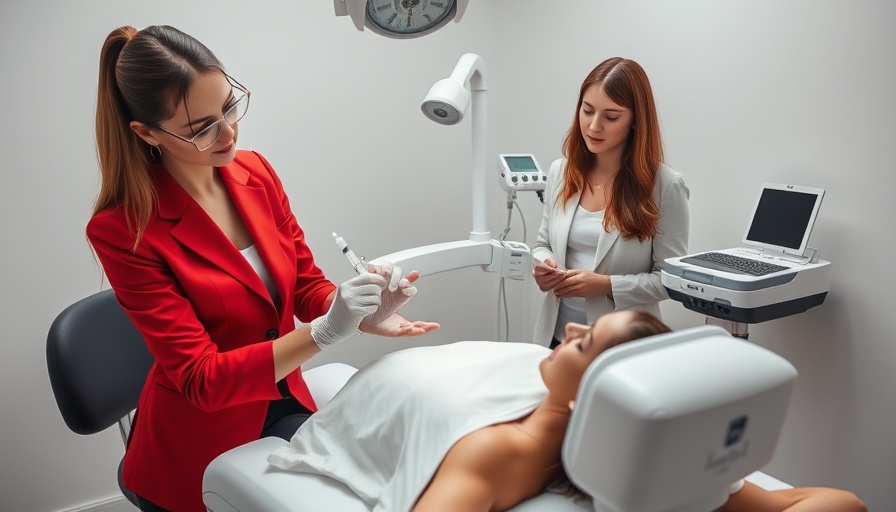
The Rise of Natural Aesthetics: A Shift in Perception
In recent years, the aesthetics industry has undergone a significant transformation. Previously marked by over-exaggerated results and dramatic alterations, the current trend is shifting towards natural-looking results. A growing number of women are seeking procedures that enhance their unique beauty rather than masking it. This change is driven by a deeper awareness of what constitutes beauty—embracing age, individuality, and self-confidence rather than striving for an unrealistic ideal.
What Defines Natural Medical Aesthetics?
Natural medical aesthetics focuses on subtle enhancements that restore and rejuvenate without compromising the patient’s natural features. This philosophy emphasizes precision, artistry, and a thorough understanding of facial structure and the ageing process. Aesthetic practitioners are now trained to aim for results that not only align with the patient's desires but also harmonize with their anatomical proportions. By adopting this approach, aesthetic care providers cultivate a space for patients to feel seen and respected as individuals.
The Importance of Patient-Centric Care
As the industry evolves, training programs for aesthetic practitioners have started to prioritize patient-centric care. Acquisition Aesthetics, a leading educational provider in aesthetic training, emphasizes the significance of considering the patient’s holistic needs. Future injectors learn to approach treatment with empathy, tailoring solutions that cater to individual preferences while endorsing safety and ethical practices. By fostering open dialogues about aesthetic goals, practitioners can build trust and ensure long-term satisfaction.
Balancing Comfort and Effectiveness in Treatments
Patient comfort during aesthetic procedures is paramount. Techniques that minimize discomfort, such as using cannulas for injections, are becoming more prevalent. These methods not only reduce immediate discomfort but also help alleviate anxiety surrounding the treatments. By educating trainees on effective pain management and preparing them to engage with patients about their concerns, the industry is gradually improving the experience for those seeking enhancements.
Longevity of Results: Key Insights for Patients
A common query that arises among patients considering non-surgical aesthetic treatments is regarding the longevity of results. Understanding what to expect can significantly impact decision-making. The typical lifespan of cosmetic results varies significantly: botulinum toxin lasts about 3 to 5 months, dermal fillers can range from 6 to 18 months, and biostimulatory agents can provide structural benefits over time. Comprehensive education remains crucial, as it empowers patients to make informed choices about their treatment plans.
Dispelling Myths in Aesthetic Treatments
One prevalent myth circulating within the beauty and aesthetics community is the belief that ceasing treatments can lead to facial drooping. Such misconceptions can discourage individuals from pursuing non-surgical interventions. A balanced understanding of how these treatments function is vital in dismantling these beliefs. By equipping patients with facts and emphasizing the importance of maintaining a plan tailored to their needs, practitioners can empower them to make informed choices about their beauty journey.
The Future of Aesthetic Medicine: Understanding Trends
As the demand for natural results continues to rise, it's anticipated that the aesthetics industry will see further innovations aimed at enhancing authenticity. Emerging treatments will likely focus on biocompatible, safe materials that seamlessly integrate with natural beauty. Additionally, as awareness of mental well-being grows, the psychological impacts of aesthetic treatments will start to garner more attention, prompting practitioners to approach care holistically.
Actionable Insights: What Patients Should Know
Women considering aesthetic treatments should arm themselves with knowledge before stepping into a clinic. It's crucial to choose practitioners who prioritize natural-looking results and patient comfort. Thoroughly research your options, read reviews, and seek consultations with various providers. Look for clinics, such as Acquisition Aesthetics, where patient education is paramount. Understanding your aesthetic goals and the available ways to achieve them will lead to more satisfying results, aligning with your vision of beauty.
Conclusion: Your Beauty, Your Journey
The evolution of aesthetic medicine towards natural results reflects a broader shift in societal values about beauty. By embracing a philosophy of enhancement over alteration, practitioners are shaping a new standard in aesthetics that values individuality and authenticity. As you embark on your beauty journey, remember that the most significant transformation comes from feeling confident and comfortable in your own skin.
 Add Row
Add Row  Add
Add 




Write A Comment